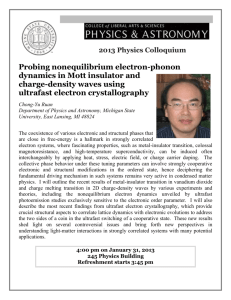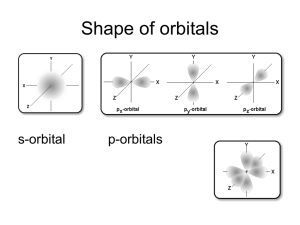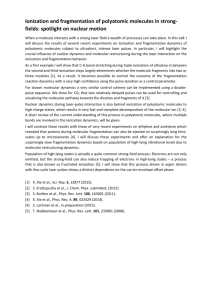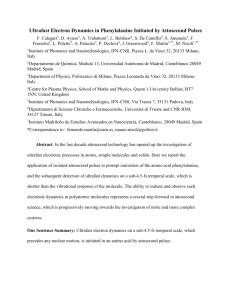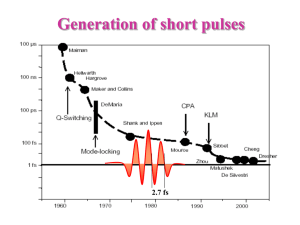Professor
advertisement
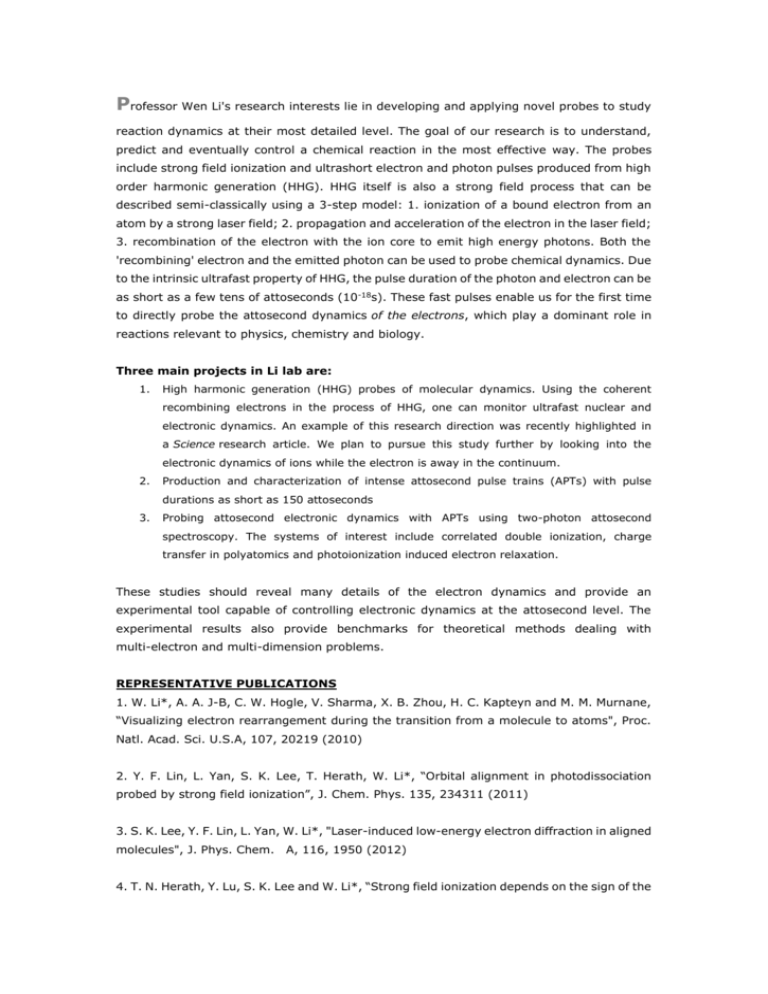
Professor Wen Li's research interests lie in developing and applying novel probes to study reaction dynamics at their most detailed level. The goal of our research is to understand, predict and eventually control a chemical reaction in the most effective way. The probes include strong field ionization and ultrashort electron and photon pulses produced from high order harmonic generation (HHG). HHG itself is also a strong field process that can be described semi-classically using a 3-step model: 1. ionization of a bound electron from an atom by a strong laser field; 2. propagation and acceleration of the electron in the laser field; 3. recombination of the electron with the ion core to emit high energy photons. Both the 'recombining' electron and the emitted photon can be used to probe chemical dynamics. Due to the intrinsic ultrafast property of HHG, the pulse duration of the photon and electron can be as short as a few tens of attoseconds (10-18s). These fast pulses enable us for the first time to directly probe the attosecond dynamics of the electrons, which play a dominant role in reactions relevant to physics, chemistry and biology. Three main projects in Li lab are: 1. High harmonic generation (HHG) probes of molecular dynamics. Using the coherent recombining electrons in the process of HHG, one can monitor ultrafast nuclear and electronic dynamics. An example of this research direction was recently highlighted in a Science research article. We plan to pursue this study further by looking into the electronic dynamics of ions while the electron is away in the continuum. 2. Production and characterization of intense attosecond pulse trains (APTs) with pulse durations as short as 150 attoseconds 3. Probing attosecond electronic dynamics with APTs using two-photon attosecond spectroscopy. The systems of interest include correlated double ionization, charge transfer in polyatomics and photoionization induced electron relaxation. These studies should reveal many details of the electron dynamics and provide an experimental tool capable of controlling electronic dynamics at the attosecond level. The experimental results also provide benchmarks for theoretical methods dealing with multi-electron and multi-dimension problems. REPRESENTATIVE PUBLICATIONS 1. W. Li*, A. A. J-B, C. W. Hogle, V. Sharma, X. B. Zhou, H. C. Kapteyn and M. M. Murnane, “Visualizing electron rearrangement during the transition from a molecule to atoms", Proc. Natl. Acad. Sci. U.S.A, 107, 20219 (2010) 2. Y. F. Lin, L. Yan, S. K. Lee, T. Herath, W. Li*, “Orbital alignment in photodissociation probed by strong field ionization”, J. Chem. Phys. 135, 234311 (2011) 3. S. K. Lee, Y. F. Lin, L. Yan, W. Li*, "Laser-induced low-energy electron diffraction in aligned molecules", J. Phys. Chem. A, 116, 1950 (2012) 4. T. N. Herath, Y. Lu, S. K. Lee and W. Li*, “Strong field ionization depends on the sign of the magnetic quantum number”, Phys. Rev. Lett. 109, 043004 (2012) 5. S. K. Lee, A. G. Suits, H. B. Schlegel and W. Li*, “A reaction accelerator: Mid-infrared strong field dissociation yields mode selective chemistry”, J. Phys. Chem. Lett. 3, 2541 (2012)
